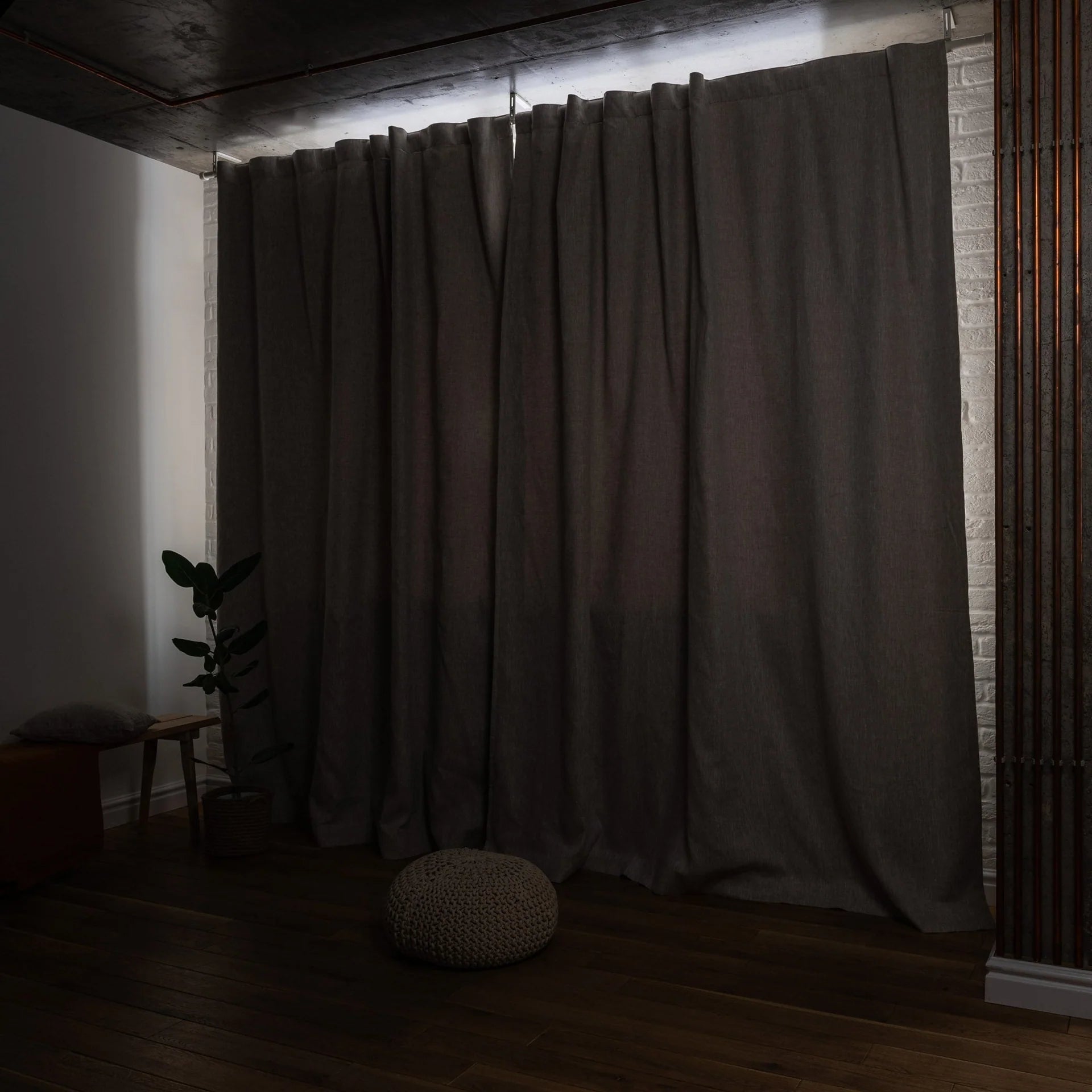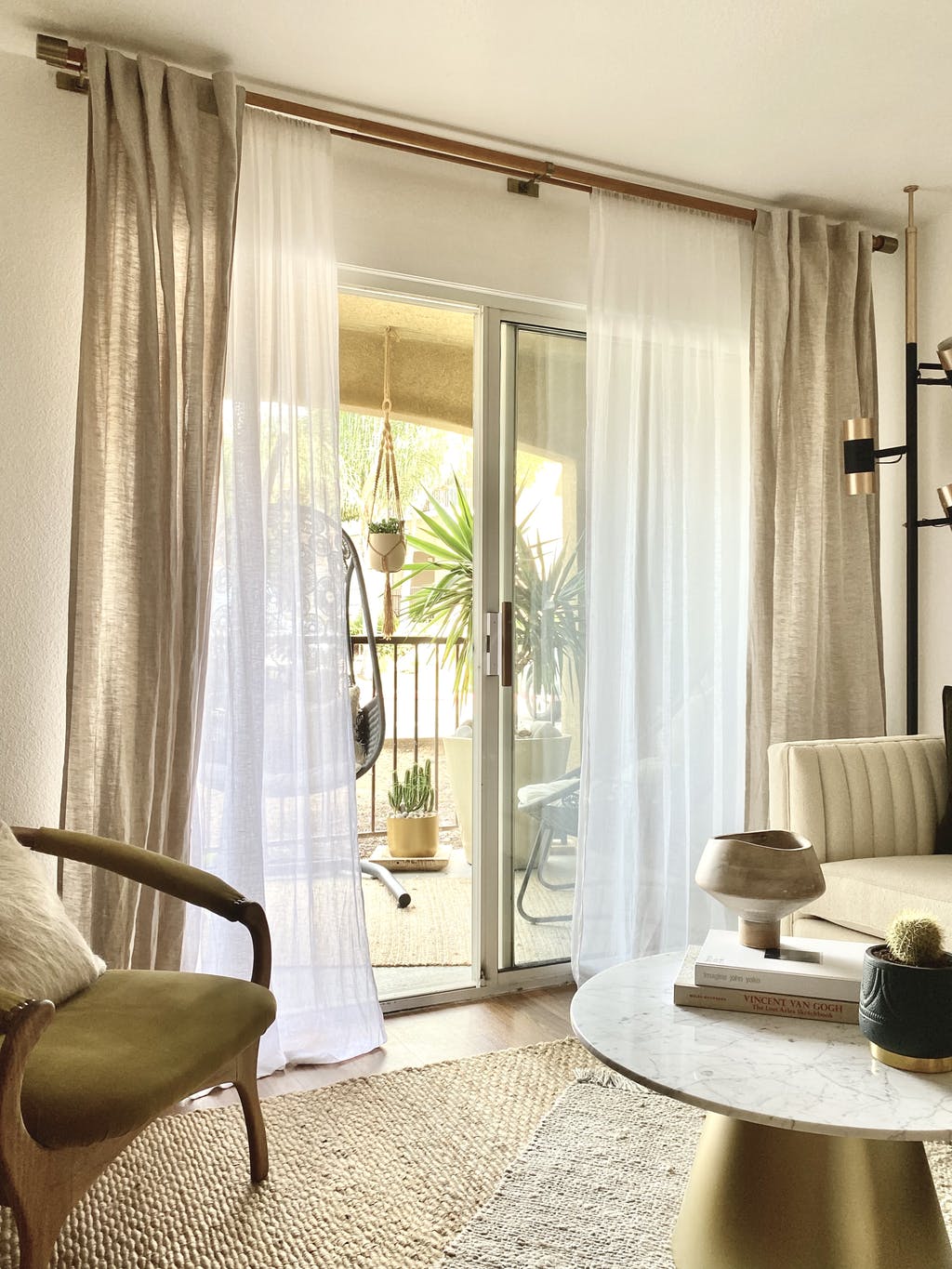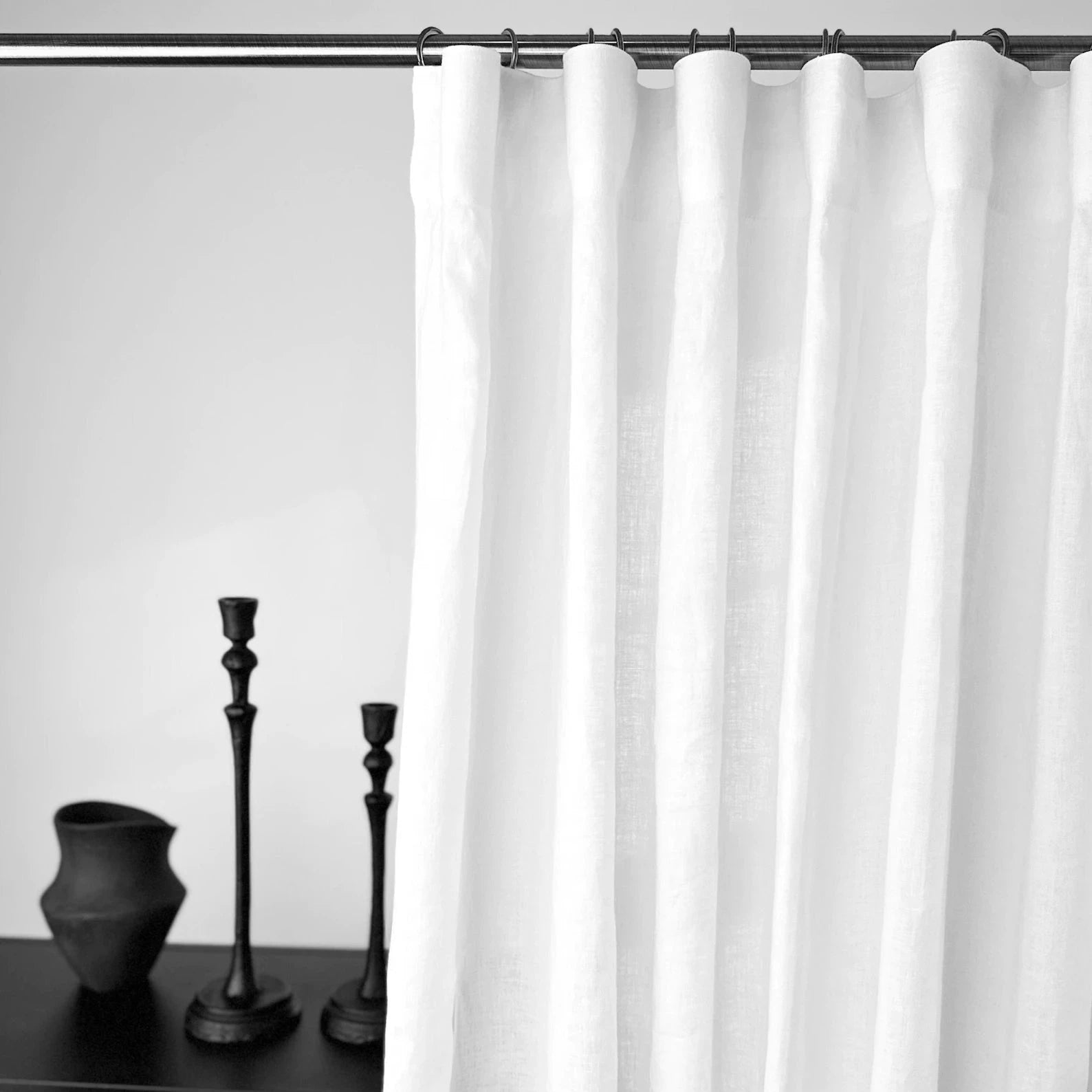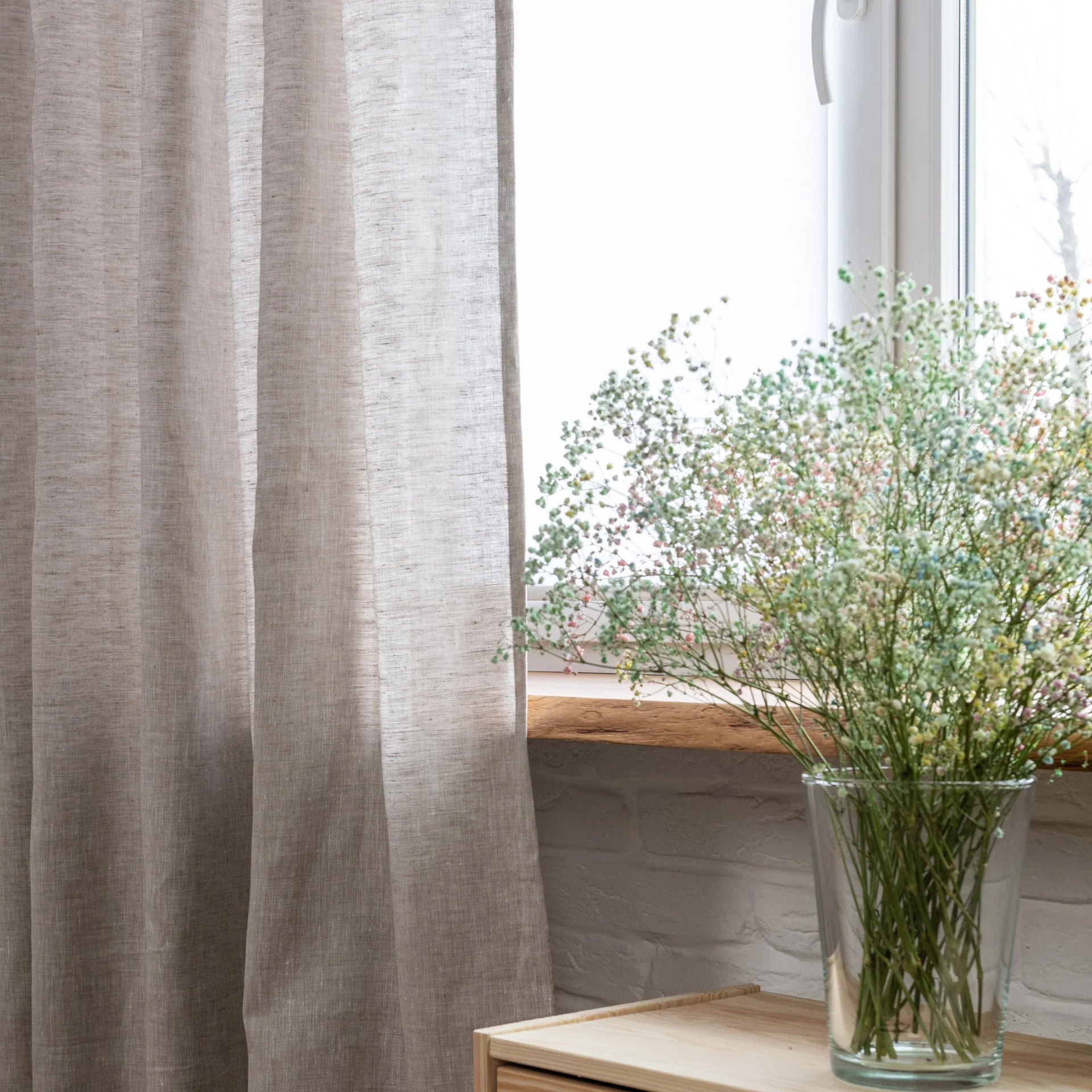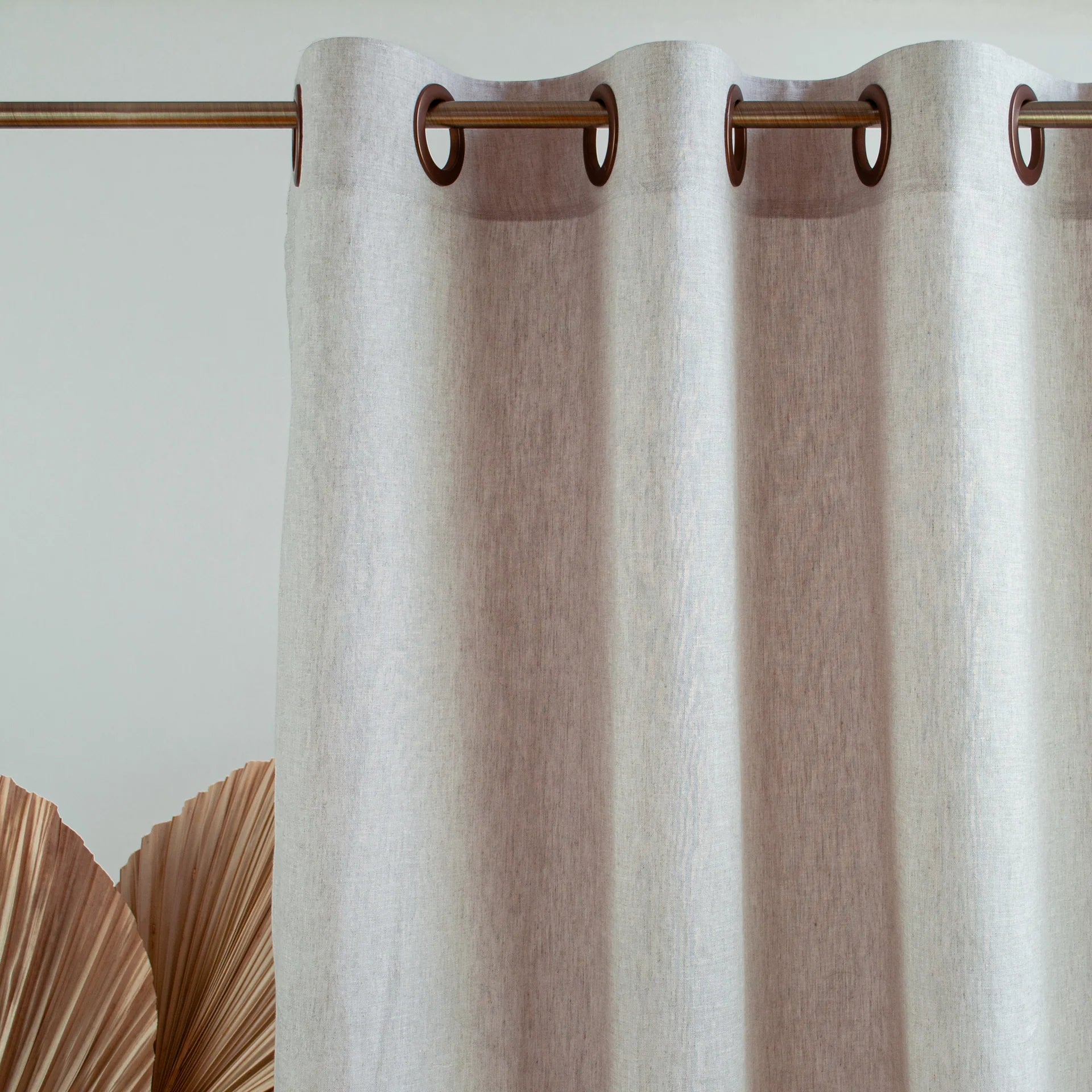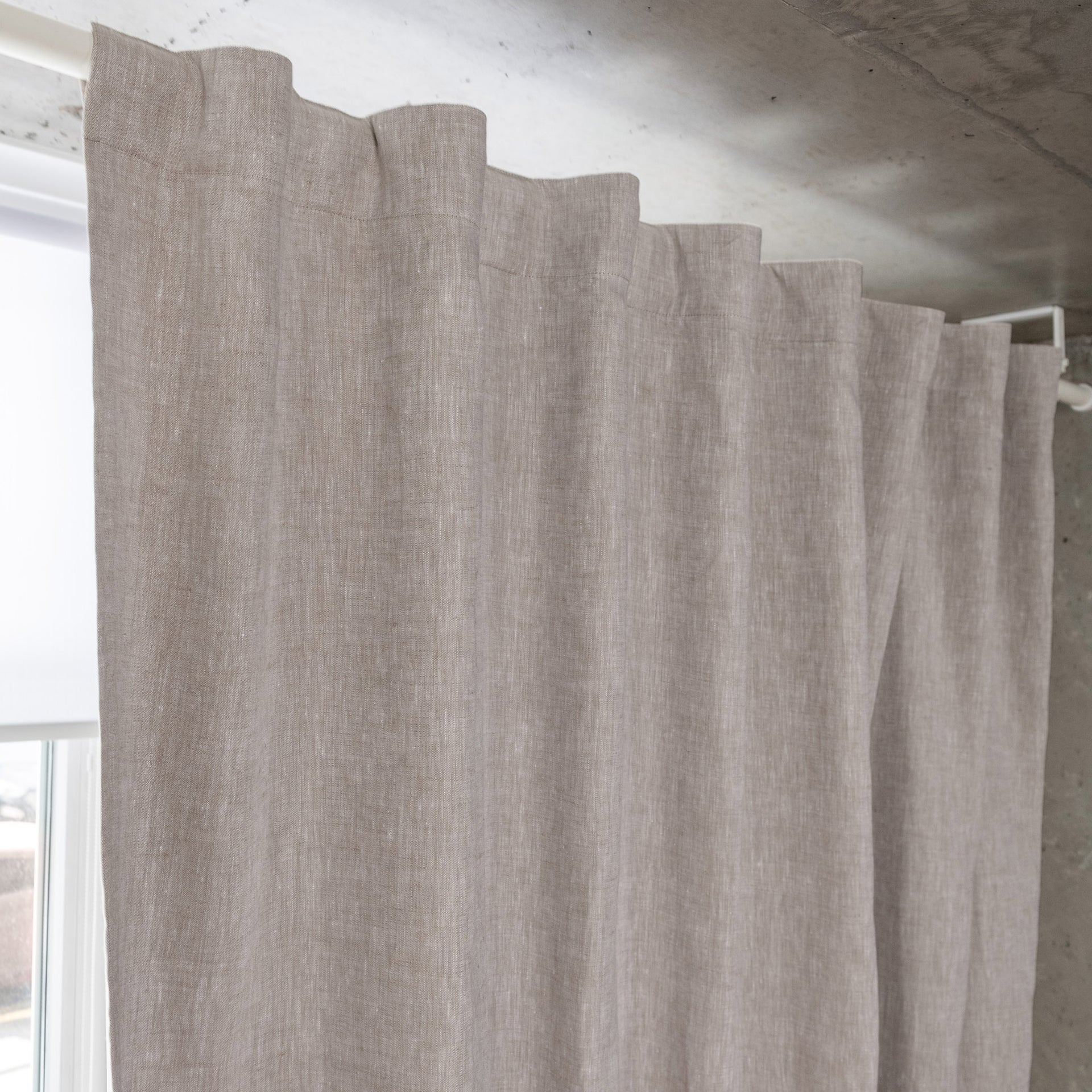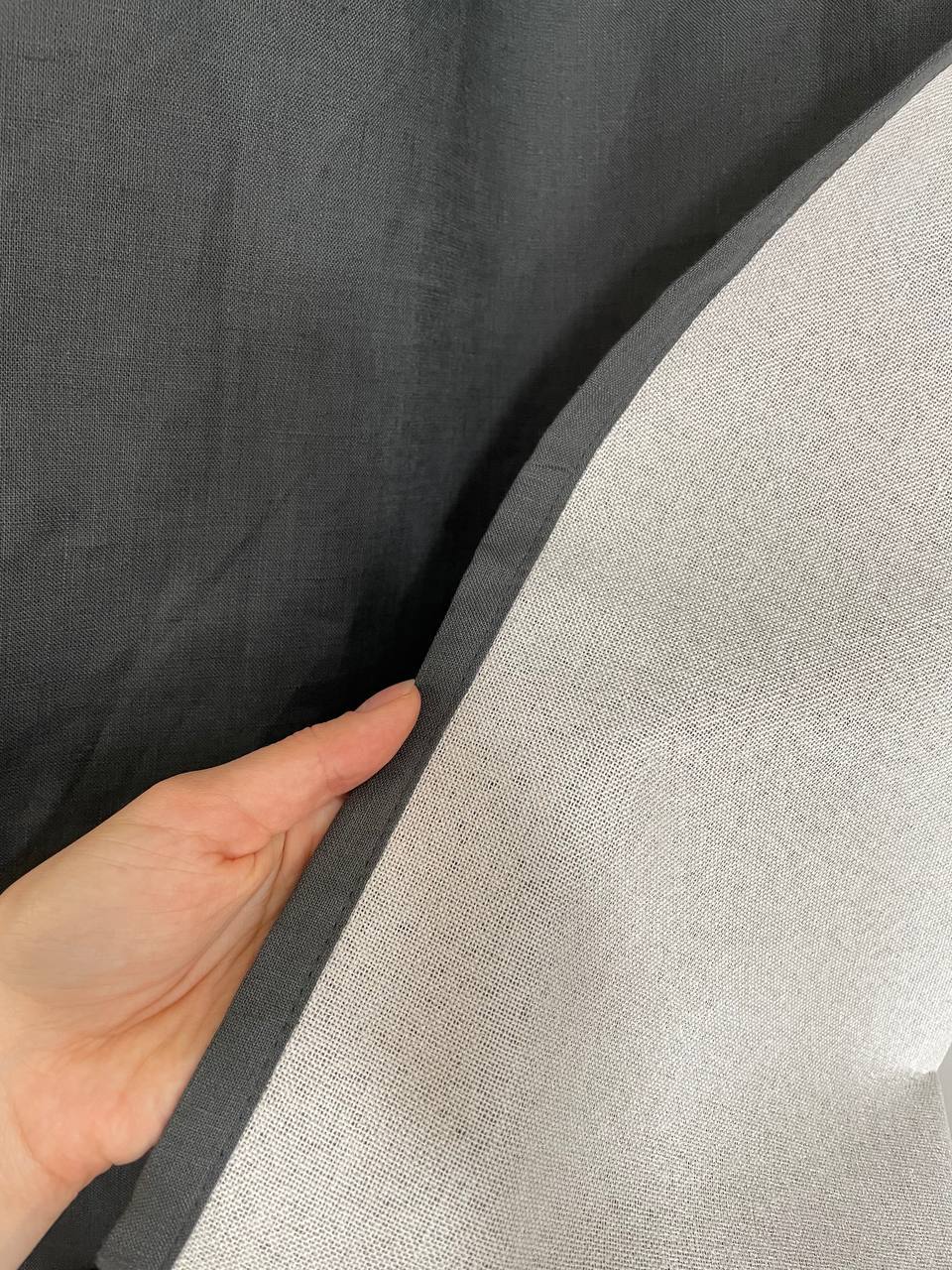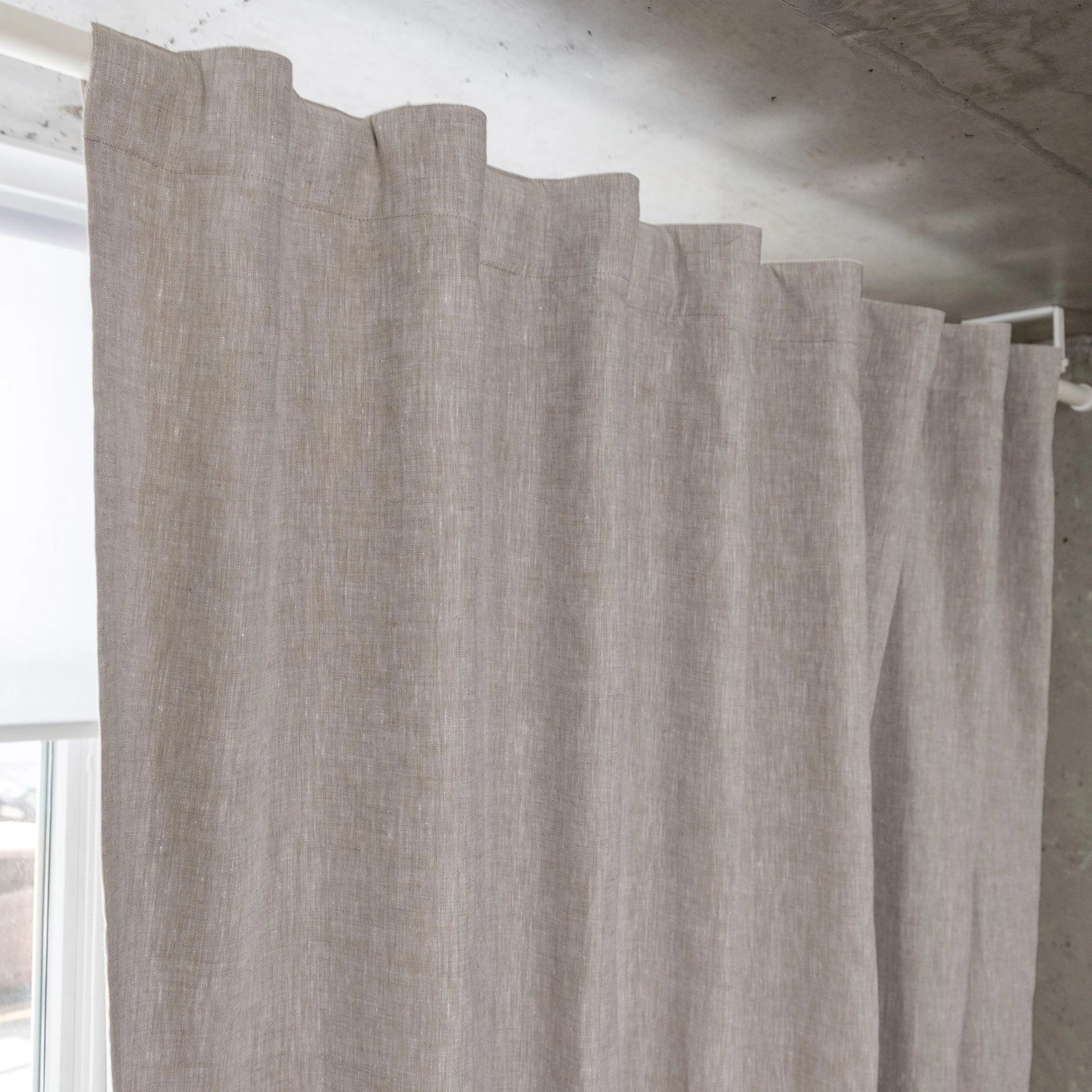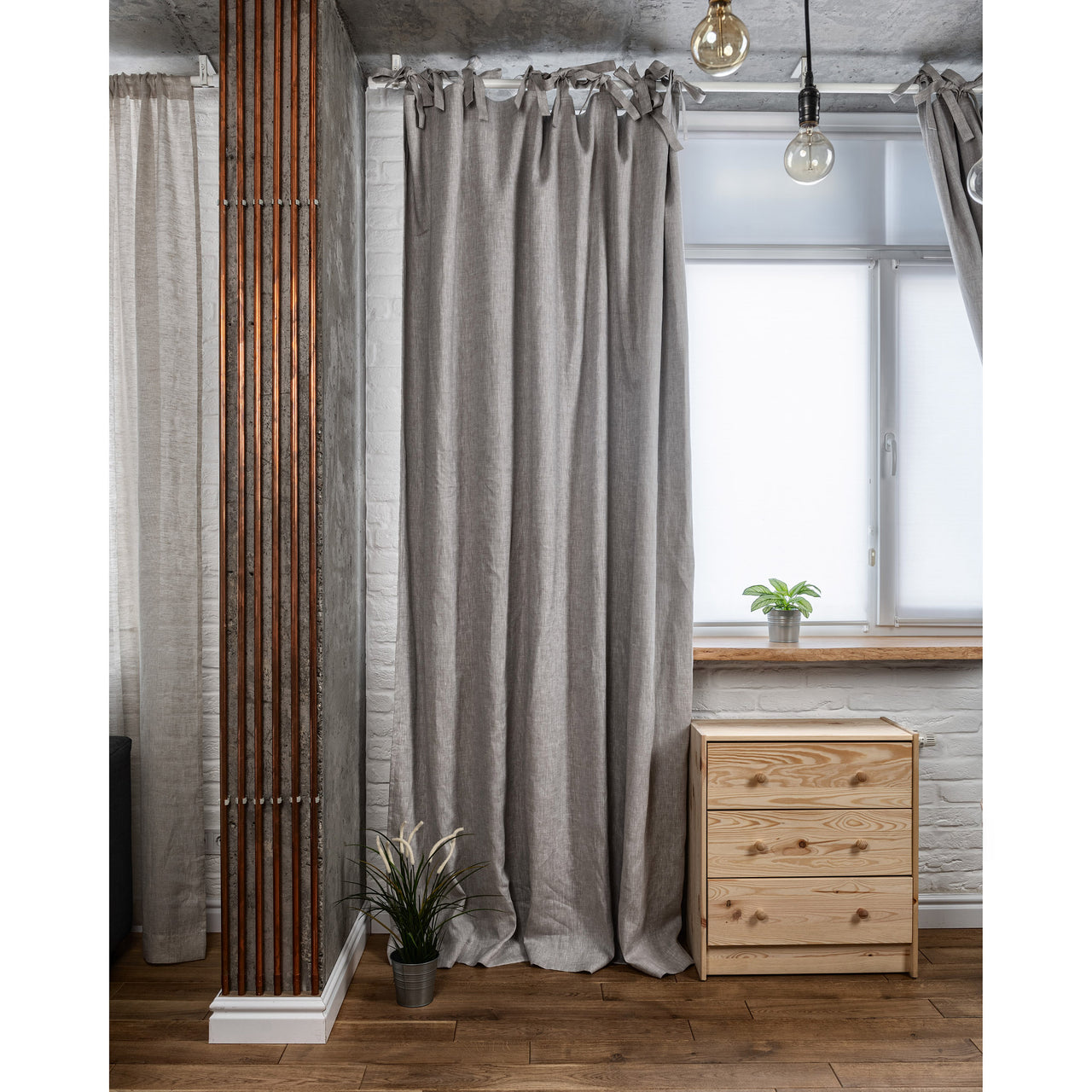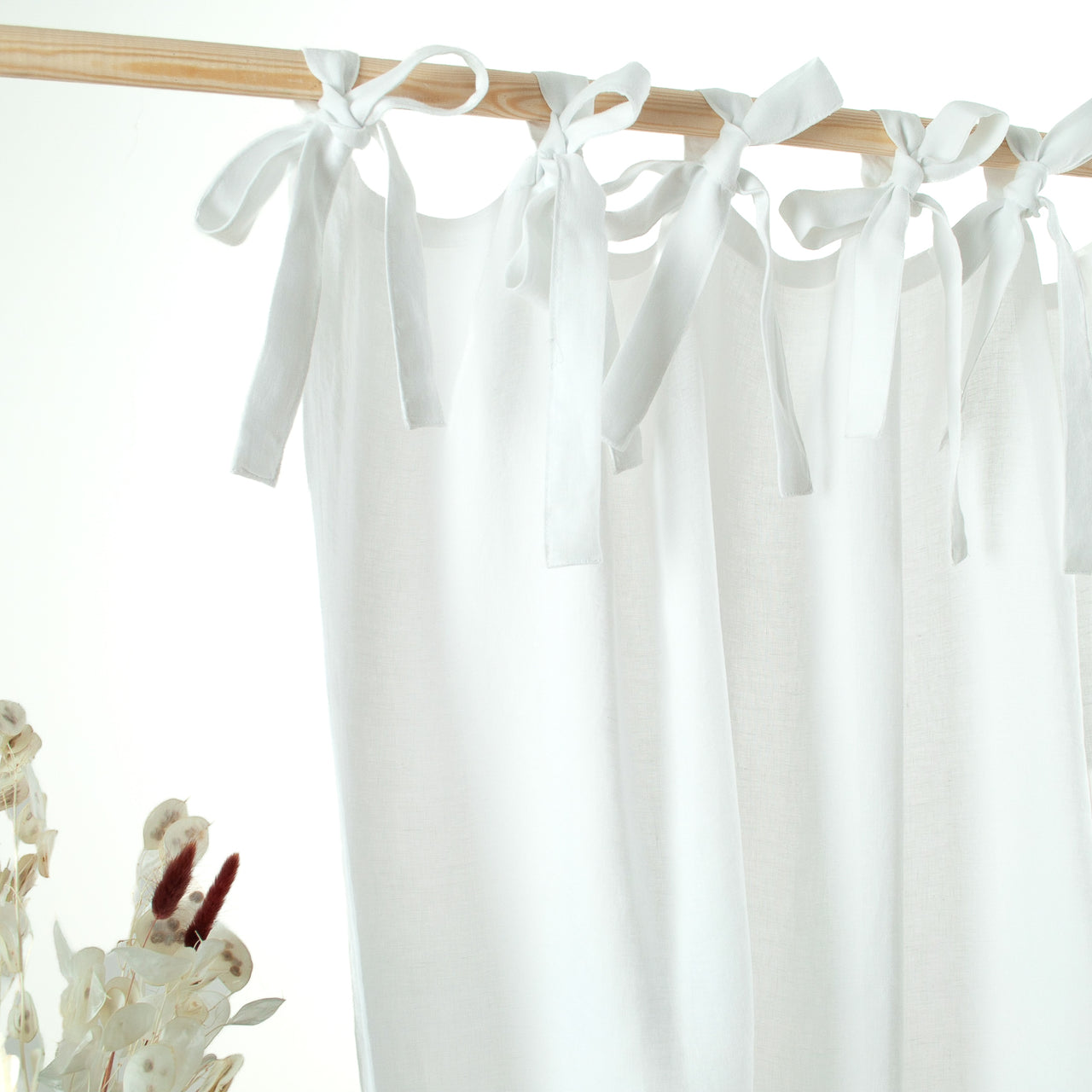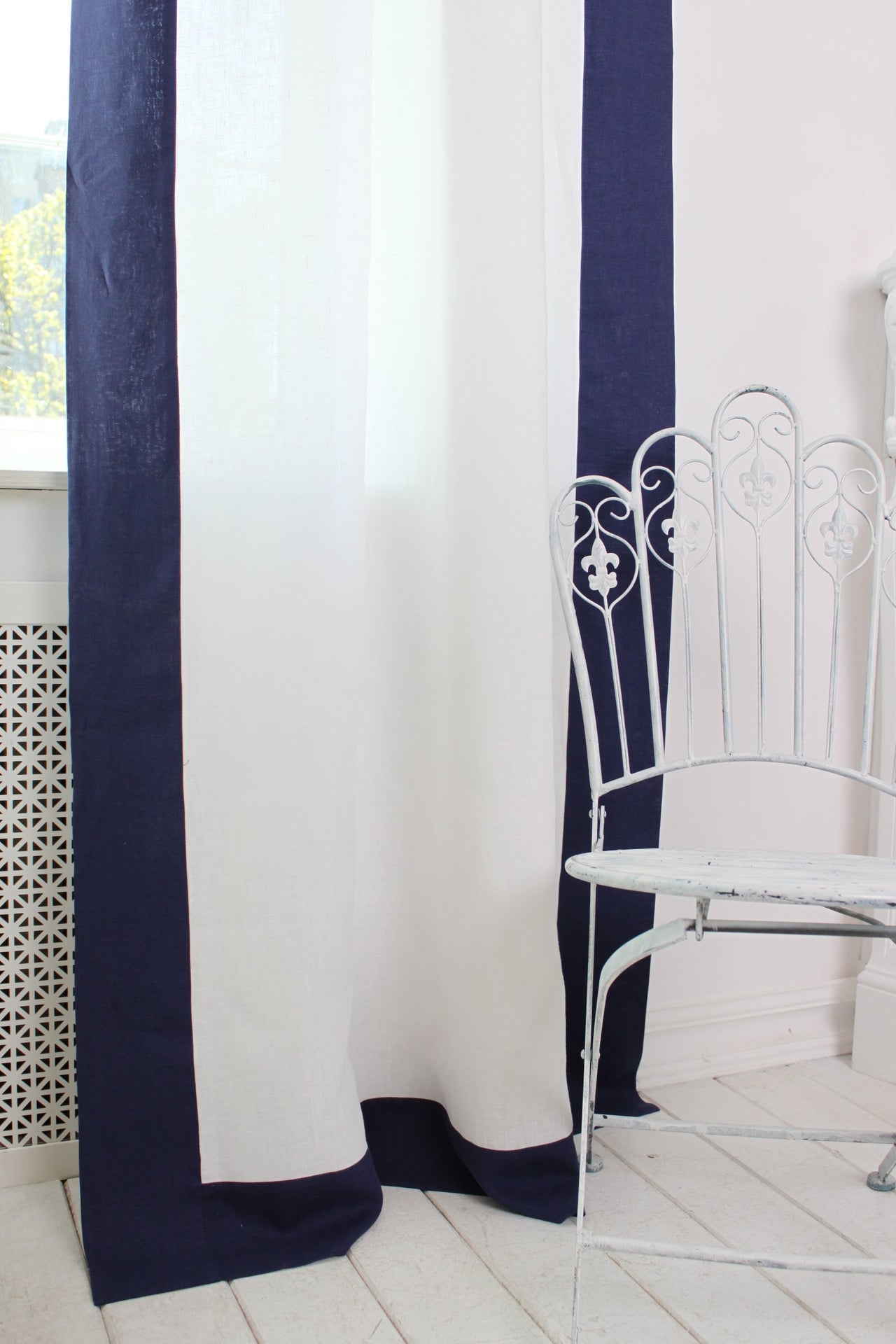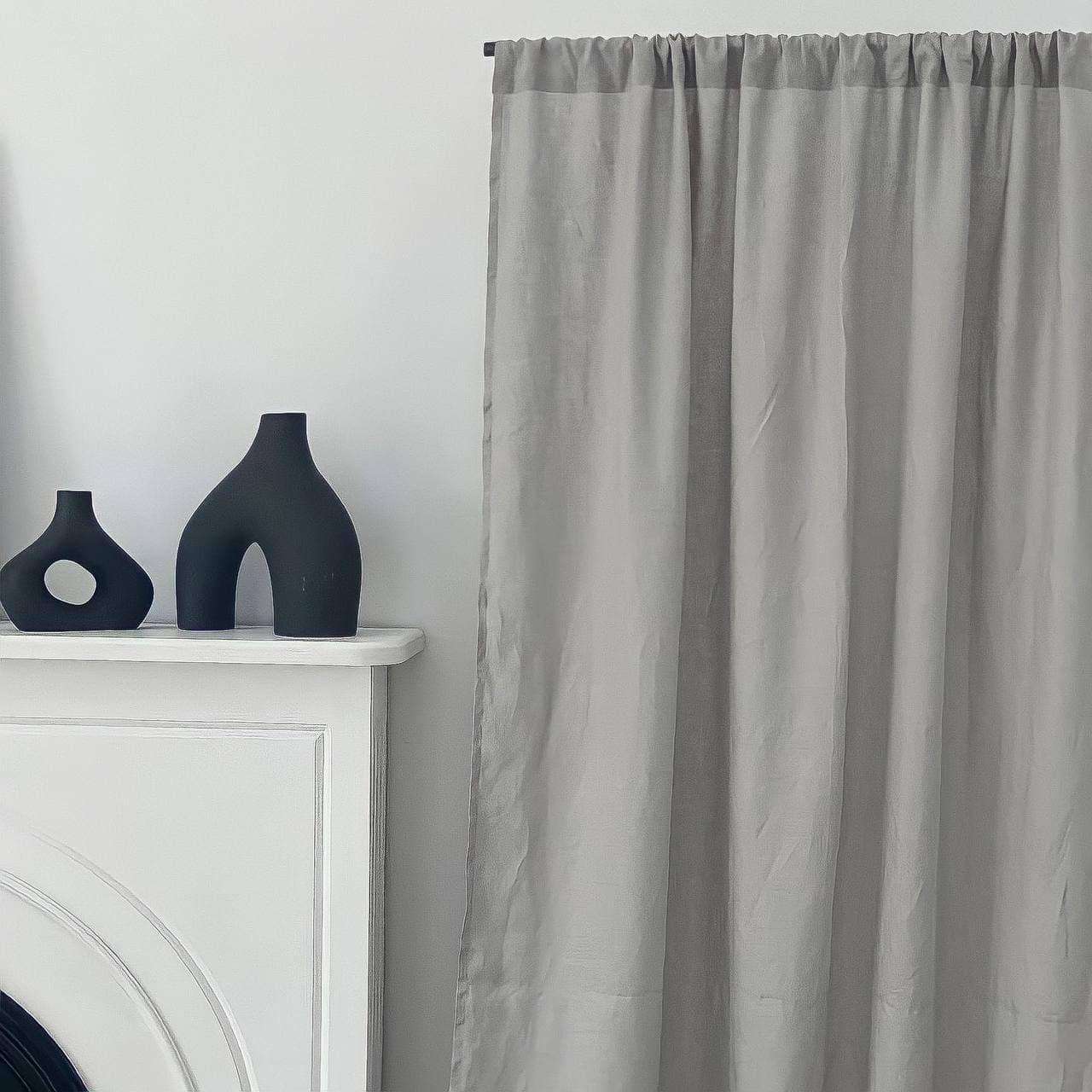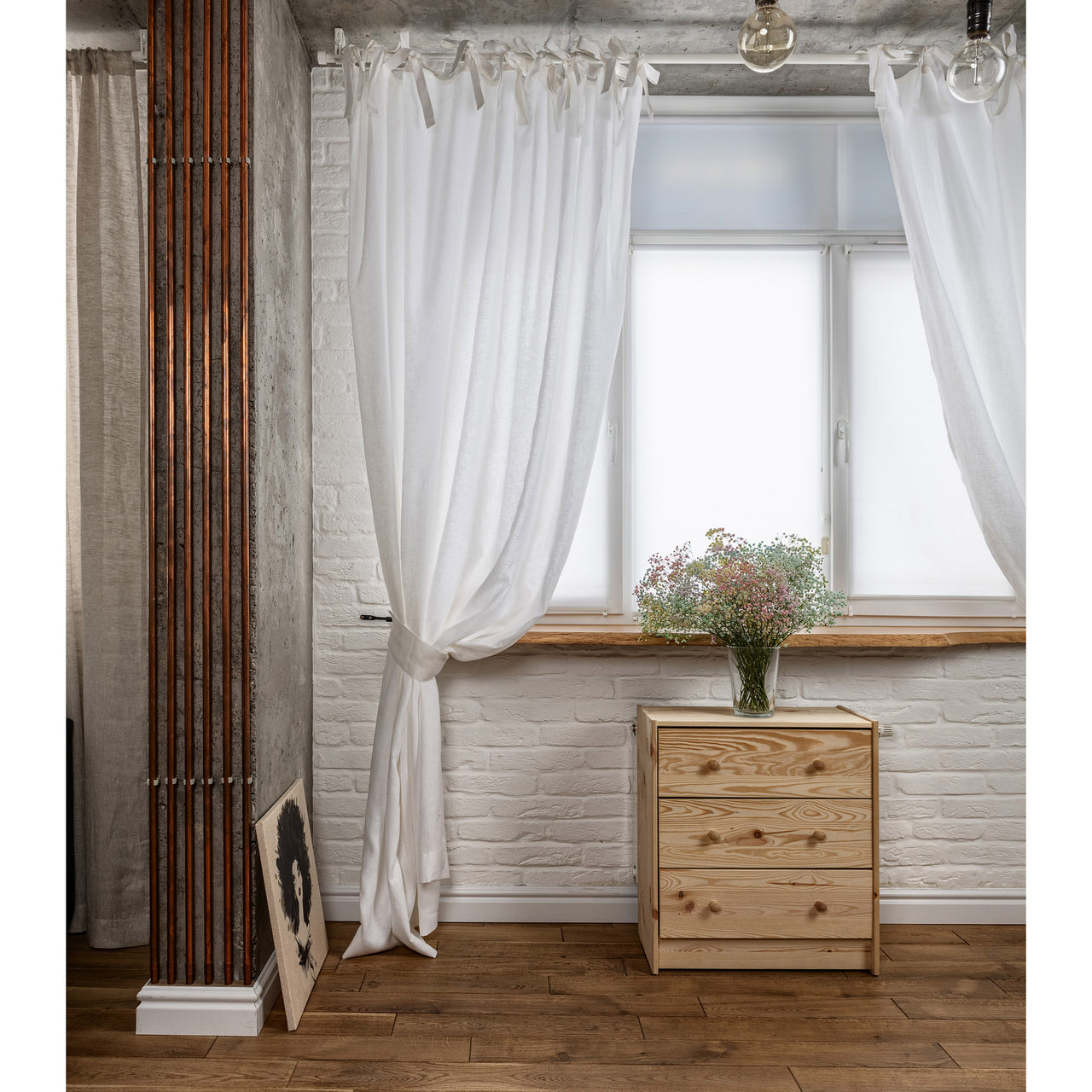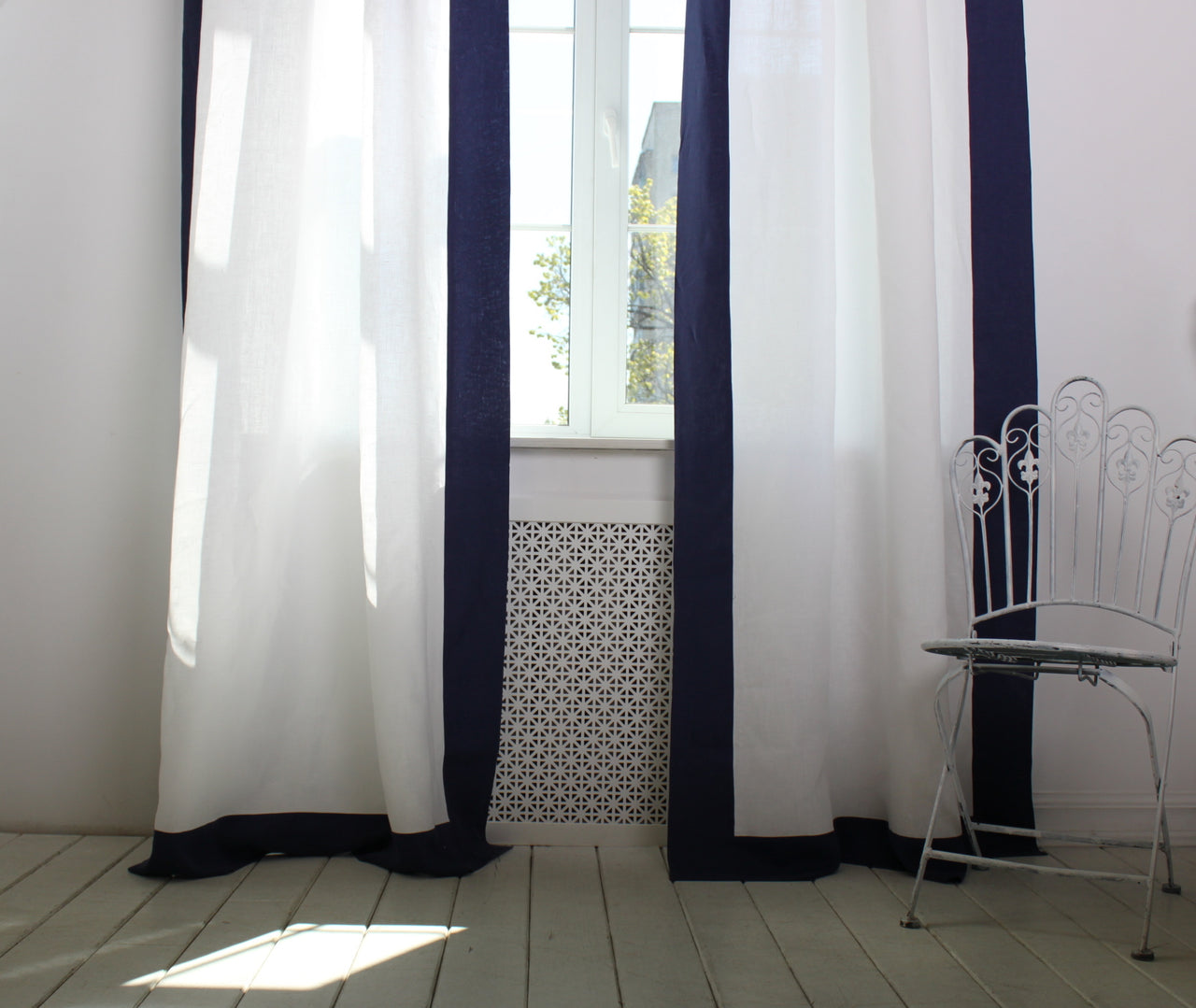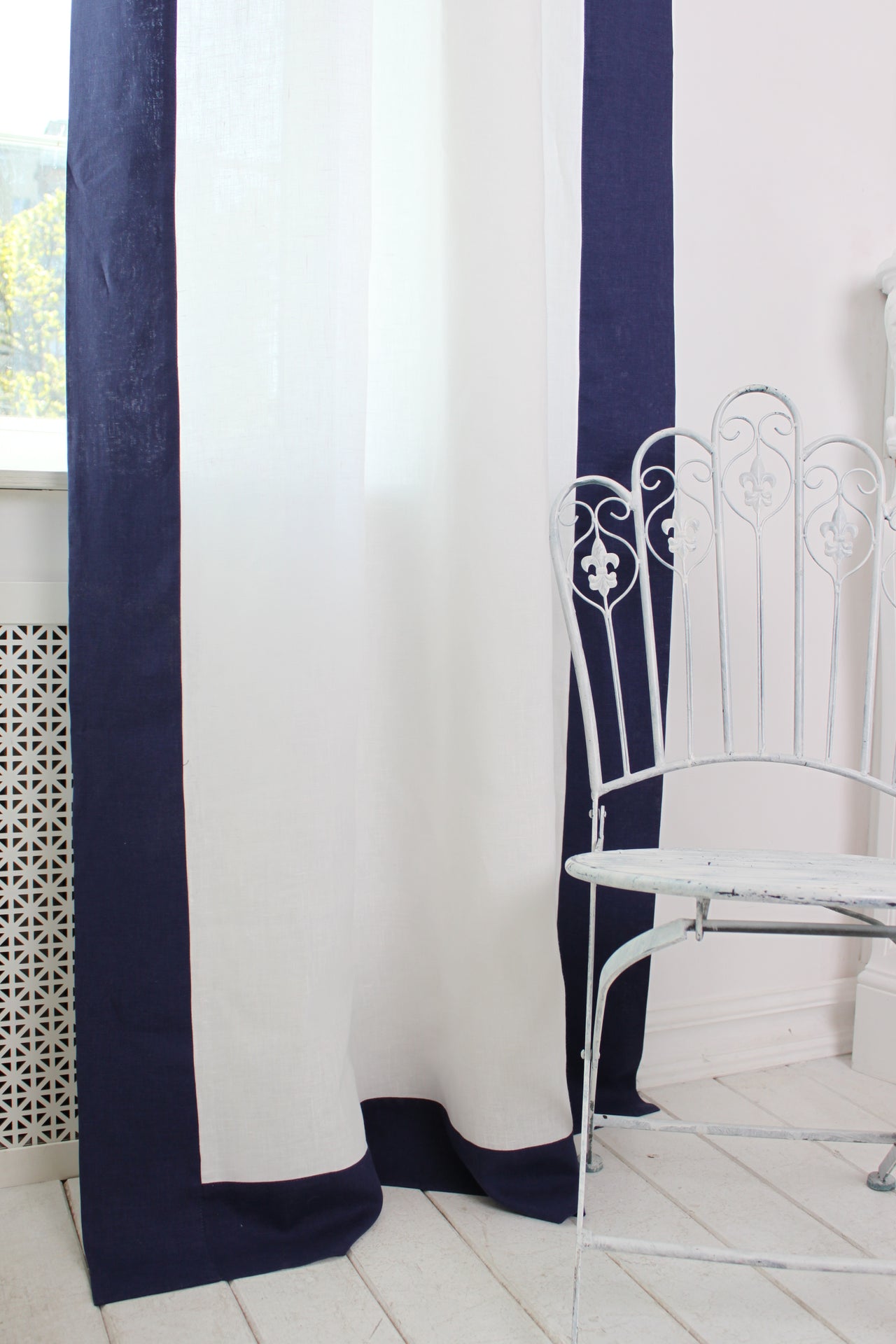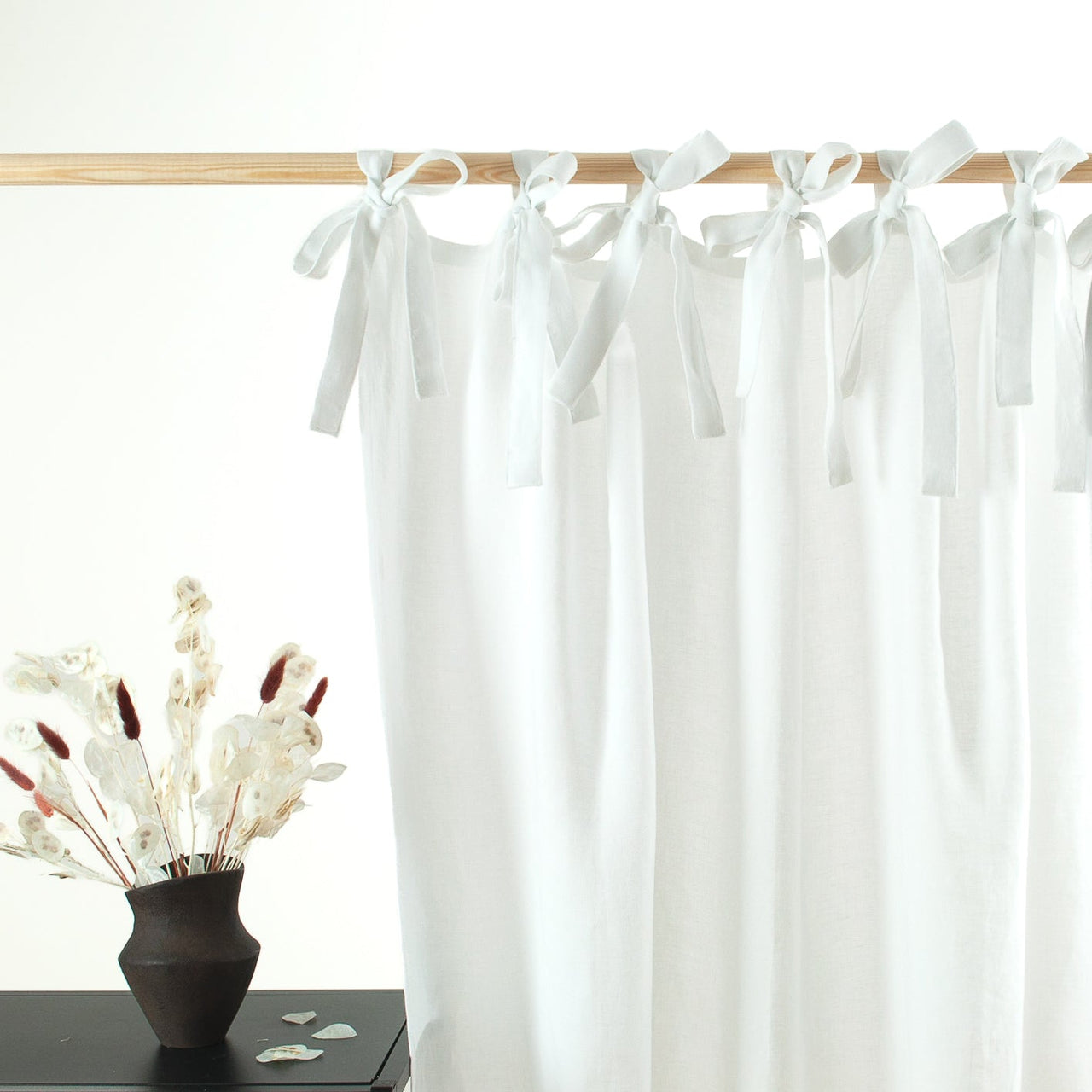How Do You Set Up Tie Top Curtains?
Tying tie-top curtains is a simple process that involves creating loops at the top of the curtain to thread a curtain rod through. Here's a step-by-step guide:
- Prepare the Curtain: Lay your tie-top curtains flat on a clean surface. Ensure they are straight and smooth out any wrinkles.
- Identify the Tie Top: Look for the fabric loops or ties at the top of tie-top curtains. These are usually located along the top edge and serve as the curtain rod's attachment points.
- Fold the Fabric Over: Fold the top edge of the tie-top curtains over to create a loop. The width of this fold will depend on the size of your curtain rods, but typically it's 2-3 inches (5-7.5 cm).
- Secure the Fold: Once you've folded the fabric over, use your fingers to hold it in place. Make sure the fold is even along the entire width of the tie-top curtains.
- Tie the Loops: Take the fabric ties or loops and tie them securely around the folded section of the tie-top curtains. You can use a simple knot or bow to secure them in place. Ensure that the ties are snug but not too tight, as you'll need to slide the curtain rod through them.
- Adjust and Straighten: After tying the loops, adjust them to make sure they're evenly spaced along the width of the tie-top curtains. Straighten out any wrinkles or folds to ensure a neat appearance.
- Hang the Curtain: Finally, insert the curtain rod through the loops you've created at the top of the tie-top curtains. Once the rod is in place, adjust the curtain as needed to ensure it hangs evenly.
That's it! You've successfully tied tie-top curtains. This method provides a simple yet elegant way to hang tie-top curtains, adding a decorative touch to your windows while also allowing for easy adjustment and removal.
How Do You Make Tie Tab Top Curtains?
Making tie-top curtains is a straightforward process that involves attaching fabric tabs to the top of the curtain panel. Here's a step-by-step guide tailored for British readers:
- Gather Materials: You'll need fabric for the curtain panels, fabric for the tabs, a sewing machine or needle and thread, scissors, pins, and a curtain rod.
- Measure and Cut Fabric: Measure the dimensions for your curtain panels based on the size of your window. Cut the fabric to the desired length and width, adding a few inches for hems.
- Cut Fabric for Tabs: Decide on the length and width of your tabs. Typically, tabs are around 4-6 inches (10-15 cm) long and 2-3 inches (5-7.5 cm) wide. Cut strips of fabric to these dimensions.
- Fold and Sew Tabs: Fold each strip of fabric in half lengthwise with the right sides facing each other. Sew along the long edge and one short edge, leaving one short edge open. Use a sewing machine or hand stitch with a straight stitch.
- Turn Tabs Right Side Out: Carefully turn each tab right side out through the open end. Use a pencil or chopstick to push out the corners and achieve crisp edges.
- Press Tabs: Iron the tabs flat to create a smooth, crisp finish.
- Attach Tabs to Curtain Panels: Position the tabs evenly across the top edge of the curtain panel, with the open ends facing downwards. Pin the tabs in place along the top edge of the curtain.
- Sew Tabs to Curtain Panels: Sew the tabs securely to the curtain panel along the top edge. You can do this by sewing a straight line across the top of each tab, ensuring it's firmly attached to the curtain panel.
- Add Finishing Touches: Trim any loose threads and give your curtains a final press to remove any wrinkles.
- Hang the Curtains: Slide the curtain rod through the tabs at the top of the curtain panel. Adjust the curtains as needed to ensure they hang evenly.
That's it! You've now made tie-tab top curtains. This style adds a charming and decorative touch to your windows, and the tie tabs allow for easy adjustment and removal when needed.
Why Do People Tie-Top Curtains in a Knot?
Tying tie-top curtains in a knot is a practical and decorative choice that serves a few different purposes, especially in British households:
- Aesthetic Appeal: Tying tie-top curtains in a knot can add a decorative touch to the room. It creates visual interest and adds a sense of style to the window treatment. Depending on the type of knot used and the curtains' fabric, it can give a room a more casual or relaxed feel or add a touch of elegance.
- Functionality: Tying tie-top curtains in a knot can help control the amount of light entering the room. By adjusting the knot, you can easily vary the amount of sunlight that filters through the window. This is particularly useful in rooms where you may want to adjust the lighting throughout the day, such as a living room or bedroom.
- Privacy: Tying tie-top curtains in a knot can also provide a degree of privacy, especially if the tie-top curtains are made of a sheer or lightweight fabric. By knotting the curtains, you can partially or fully block the view from outside while still allowing some natural light to enter the room.
- Temporary Solution: Tying tie-top curtains in a knot can be a quick and temporary solution for keeping curtains open. It's particularly handy if you don't have curtain tiebacks or hooks readily available. This makeshift method allows you to keep the curtains pulled back when you want to let more light into the room or enjoy an unobstructed view through the window.
Overall, tying tie-top curtains in a knot is a versatile and practical technique that allows for easy adjustment of light, privacy, and style in a room. Whether it's for decorative purposes or functional reasons, tying curtains in a knot can be a simple yet effective way to enhance the look and feel of your living space.
Is It Old Fashioned to Tie Back Curtains?
In British culture, tying back curtains is considered a traditional and classic way to style window treatments. However, whether it's considered old-fashioned depends on individual tastes and contemporary interior design trends. Here are a few points to check:
- Classic Elegance: Tying back tie-top curtains has a timeless appeal that evokes a sense of classic elegance. It can add a touch of sophistication to a room, particularly if the curtains are made from luxurious fabrics like silk or velvet.
- Traditional Charm: Many people appreciate the traditional charm of tying back tie-top curtains, especially in period or heritage homes where it complements the overall aesthetic. It can enhance the character of the space and contribute to its vintage appeal.
- Versatility: Tying back tie-top curtains offers versatility in terms of light control and style. It allows you to easily adjust the amount of natural light entering the room while creating different looks depending on how the tie-top curtains are tied back.
- Contemporary Alternatives: While tying back tie-top curtains remains popular, some may perceive it as slightly old-fashioned compared to more modern alternatives. Contemporary interior design trends often lean towards minimalism and simplicity, which may involve leaving curtains to hang freely or using sleeker tieback styles.
- Personal Preference: Ultimately, whether tying back tie-top curtains is considered old-fashioned is subjective and depends on personal preference. Some individuals may prefer the classic look and feel it brings to their home decor, while others may opt for more contemporary styles.
In conclusion, while tying back tie-top curtains can be viewed as traditional or classic, its appeal remains subjective. Whether it's considered old-fashioned largely depends on individual tastes and the overall style of the room. Ultimately, what matters most is creating a space that feels comfortable and reflects your personal aesthetic preferences.
What is a Curtain Tie?
In British English, a curtain tie refers to any method or accessory used to hold back or secure tie-top curtains in an open position, allowing more light into the room and making an aesthetically pleasing look. Tie-top Curtain ties come in various styles and materials, and they serve both practical and decorative purposes. Here are some common types of curtain ties:
- Tiebacks: Tiebacks are probably the most common type of curtain tie. They are fabric or rope loops that are attached to the wall or the sides of the window frame and used to gather and hold back the tie-top curtains. Tiebacks come in a variety of designs, from simple fabric loops to ornate tassels or braids, adding a decorative touch to the window treatment.
- Holdbacks: Holdbacks are similar to tiebacks but are typically mounted directly onto the wall rather than the window frame. They can be made of metal, wood, or other materials and are used to hold the tie-top curtains open by gathering them to the sides of the window. Holdbacks are often more substantial than tiebacks and can make a bold statement in a room.
- Curtain Clips: Curtain clips are small clips or rings that attach to the top edge of the curtain panel. They allow you to hold the curtain back by clipping it to the wall or window frame. They are a simple and practical solution, especially for lightweight tie-top curtains or those with rod pockets instead of grommets or tabs.
- Rope Ties: Rope ties are lengths of rope or cord that are tied around the curtain to hold it back. They can be tied in a variety of knots, such as a simple bow or a more decorative knot, depending on the desired look.
- Fabric Strips: Fabric strips are another option for tying back tie-top curtains. These are strips of fabric that match or complement the tie-top curtains, which are tied around the curtain to secure it in an open position. Fabric strips can add a soft and romantic touch to the window treatment.
Overall, curtain ties are versatile accessories that not only serve a practical function but also add style and personality to a room's decor. Whether you prefer a classic, elegant look or something more modern and minimalistic, there's a curtain tie option to suit every taste and style.
What are some of the popular designs for Tie-Top Curtains?
Tie-top curtains are a popular choice for their casual, relaxed look and ease of installation. When it comes to designing tie-top curtains, you can incorporate various design patterns to enhance their aesthetic appeal and functionality. Here are some design patterns you might consider:
- Classic Stripes: Create a timeless look with classic horizontal stripes. You can use two or more contrasting colors to add depth and visual interest to the tie-top curtains. Stripes can make the room appear taller or wider depending on their orientation.
- Floral Prints: Choosing tie-top curtains with a subtle floral pattern can be the sign of a homeowner who appreciates understated elegance in their decor. Choose from delicate blooms for a subtle effect or bold, oversized florals for a statement look. Coordinate the colors of the flowers with your existing decor for a cohesive appearance.
- Geometric Designs: Incorporate geometric shapes such as chevrons, triangles, or hexagons for a modern and stylish vibe to your tie-top curtains. Geometric patterns can add a contemporary touch to your home and complement minimalist or mid-century modern interiors.
- Nature-inspired Prints: Bring the beauty of the outdoors inside with tie-top curtains featuring nature-inspired prints such as leaves, branches, or birds. These patterns can create a calming and serene atmosphere in your home, perfect for relaxation and rejuvenation.
- Ombre Effect: Create a subtle gradient effect by using fabrics with ombre dyeing or printing techniques. Ombre drapes transition from one color to another, adding depth and dimension to your windows. This design pattern works well with solid colors or subtle patterns.
- Nautical Themes: Embrace a coastal-inspired aesthetic with tie-top curtains featuring nautical motifs like anchors, ropes, or sailboats. These patterns can evoke a sense of seaside charm and are perfect for beach houses or rooms with a coastal decor theme.
- Tropical Prints: Transport yourself to a tropical paradise with tie-top curtains adorned with palm leaves, tropical flowers, or exotic fruits. Tropical prints can infuse your home with energy and vibrancy, creating a cheerful and uplifting atmosphere.
- Patchwork: For a bohemian-inspired look, consider using patchwork fabrics to create eclectic tie-top curtains. Mix and match different patterns, colors, and textures to add visual interest and personality to your windows.
- Damask Patterns: Incorporate damask patterns for a touch of luxury and sophistication. Damask designs typically feature intricate motifs and are often associated with traditional or formal decor styles. Choose rich, jewel-toned colors for a regal appearance to your tie-top curtains.
- Tie-dye: Add a playful and eclectic touch to your tie-top curtains with tie-dye patterns. Experiment with different dyeing techniques and color combinations to create unique and eye-catching designs that reflect your personal style.
When selecting a design pattern for your tie-top curtains, check factors such as the overall decor style of your space, the privacy you want, and the functionality of the linen curtains. Whether you prefer classic elegance, modern flair, or eclectic charm, there's a design pattern out there to suit your taste and enhance your home's aesthetic appeal.
What is the ideal color for Tie-Top Curtains?
The choice of color for tie-top curtains can significantly impact the overall look and feel of a room. Popular color options for tie-top curtains often depend on the existing decor, personal preferences, level of privacy, and the mood you want to create. Here are some popular color options for tie-top curtains:
- Neutral Tones: Neutral colors such as white, ivory, beige, and taupe are timeless choices for tie-top curtains. They are a great way to create a clean, airy feel and complement a wide range of decor styles, from minimalist to traditional.
- Bold and Bright: Bold colors such as deep red, royal blue, emerald green, or mustard yellow can make a statement and infuse your home with energy and personality. These vibrant hues work well as accent colors in rooms with neutral walls and furnishings.
- Earthy Tones: Earthy tones like terracotta, olive green, rust, and burnt orange bring warmth and coziness to tie-top curtains. These colors are inspired by nature and can create a rustic, inviting atmosphere in your home.
- Metallic Accents: Metallic finishes such as gold, silver, or copper add a touch of glamour and sophistication to tie-top curtains. Opt for curtains with metallic threads, embellishments, or subtle shimmer for a luxe look.
- Black and White: A classic combination, black and white tie-top curtains offer timeless elegance and contrast. Black accents can add drama and depth to white curtains, while white accents can soften the boldness of black curtains.
When choosing the color for your tie-top curtains, consider the mood you want to achieve, the existing color palette of your room, and how the curtains will complement other elements such as furniture, walls, and accessories. Ultimately, selecting a color that resonates with your personal style and enhances the overall ambiance of your space is key.

